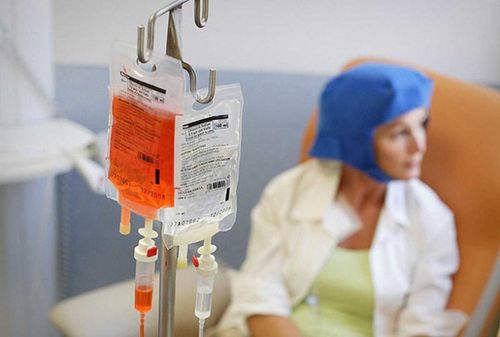Khi trên cơ thể chúng ta có những vết thương hở thì thường có hiện tượng chảy nước vàng từ vết thương ra. Vậy nước vàng chảy ra đó là gì? Phải làm gì khi vết thương bị chảy nước vàng?
1. Tại sao vết thương chảy nước vàng?
Nước vàng chỉ thấy ở các vết thương hở bên ngoài da. Các vết thương hở thường là các vết thương xuất phát từ tai nạn bên ngoài hoặc là sự bất cẩn trong cuộc sống hàng ngày, đây là các vết rách sâu bị lộ nền vết thương. Lúc này, vết thương đã mất đi màng bảo vệ, tạo điều kiện cho vi khuẩn xâm nhập.
Nước vàng chảy ra ở vết thương hở đấy được chia thành hai loại, không chỉ khác nhau về màu sắc mà còn đối ngược nhau hoàn toàn về tính chất.
1.1 Nước vàng trong
Đây chính là dịch tiết sinh lý của cơ thể, chính xác hơn là huyết tương. Loại dịch này không có hại cho cơ thể mà còn có tác dụng bảo vệ vết thương, có thể làm mát và che chắn cho vết thương hở.
Thường thì nước vàng trong này sẽ xuất hiện sau khi vết thương xảy ra khoảng 3 đến 7 ngày, và sẽ nhanh chóng giúp vết thương lành lại. Sau đó nếu được xử lý đúng cách.
Thông thường quanh miệng vết thương khi này sẽ có những vệt màu hồng đỏ tạo cảm giác ngứa, đây chính là khi vết thương bắt đầu lên da non.
1.2 Nước vàng đục
Khi vết thương chảy ra nước màu vàng đục và xuất hiện thêm mủ trắng kèm theo mùi hôi khó chịu thì đây lại là dấu hiệu rất không tốt cho sức khỏe, khi ấy vết thương đã bị nhiễm trùng.
Nếu không xử lý kịp thời thì vết thương sẽ càng trở nên trầm trọng thì không chỉ vết thương mãi không lành mà sẽ càng ngứa dữ dội, đau rát sưng đỏ thậm chí có thể dẫn đến hoại tử tế bào.
2. Các nguyên nhân phổ biến dẫn đến nhiễm trùng vết thương hở?
Vết thương hở rất dễ xảy ra tình trạng nhiễm trùng, có rất rất nhiều nguyên nhân khác nhau dẫn đến tình trạng đó như:
Dùng xà phòng để rửa vết thương: Đây là nguyên nhân mà khá nhiều người mắc phải. Xà phòng có khả năng làm sạch rất tốt nhưng nó lại quá mạnh để sử dụng cho các vết thương hở đã mất lớp da bảo vệ. Việc dùng xà phòng thông thường làm sạch không chỉ gây kích ứng mà còn làm chậm quá trình hồi phục của vết thương.
Bụi bẩn: Tùy vào từng môi trường dẫn đến xảy vết thương khác nhau mà khả năng nhiễm trùng cũng khác. Nếu vết thương hở khi ma sát với mặt đường đầy cát sỏi hay trong môi trường khói bụi thì ngay lập tức các chất bẩn đấy sẽ thâm nhập vào trong vết thương. Làm sạch vết thương là việc rất quan trọng để điều trị vết thương hở, nhưng đối với bụi bẩn thì việc làm sạch khá là khó vì phải tác động mạnh lên nó.
Không dùng urgo: Không nên băng quá kín là đúng, nhưng nếu không dùng băng cá nhân để bảo vệ vết thương sẽ khiến phản tác dụng. Không băng vết thương vào sẽ tạo điều kiện cho vi khuẩn tiến vào, khiến vết thương bị nhiễm trùng. Vết thương cần được bảo vệ và có độ ẩm tiêu chuẩn mới giúp các tế bào di chuyển đến vùng bị thương hỗ trợ việc hồi phục nó.
Vết thương có gỉ kim loại: Các vết thương sâu do đồ vật bằng kim loại gây ra, nhất là các kim loại cũ có các gỉ cứng thì nên đến trạm y tế để điều trị ngay lập tức. Trường hợp này rất khó xử lý ở nhà vì có khả năng bị uốn ván rất cao. Phần lớn vết thương như thế cần phải điều trị trước khi băng bó hoặc khâu lại nếu không rấy dễ bị nhiễm trùng.

3. Làm gì khi vết thương chảy nước vàng?
Các vết thương ngoài da thường là vết thương nhẹ, không gây ra nguy hiểm quá lớn đến sức khỏe mọi người. Nhưng nếu vết thương kéo dài, bị nhiễm khuẩn lại là vấn đề khác. Nó không chỉ ảnh hưởng đến sinh hoạt hàng ngày mà còn gây ra nhiều hệ quả khác.
Để vết thương lành nhanh, chế độ dinh dưỡng đóng một vai trò hết sức quan trọng, trong quá trình phục hồi của vết thương. Bạn có thể tham khảo một số loại thức ăn cần tránh để vết thương hồi phục nhanh hơn.
Ngoài ra, bạn không nên chủ quan khi xử lý vết thương hở, nên thận trọng từng bước để tránh vết thương bị nhiễm trùng:
- Bước 1 - Rửa tay
Trước khi động vào bất kỳ vết thương nào nhất là vết thương hở, việc đầu tiên bạn cần làm là làm sạch tay bằng xà phòng hay dung dịch sát khuẩn. Bởi lẽ bạn sẽ sử dụng tay để trực tiếp tiếp xúc với vết thương nên cần làm sạch nó để hạn chế tối đa sự nhiễm trùng. Nếu có thể, sử dụng găng tay y tế một lần để xử lý vết thương cũng là phương án rất tốt. - Bước 2 - Cầm máu
Vết thương hở chính là khi lớp da bảo vệ bên ngoài bị mất đi, vì vậy máu sẽ trực tiếp chảy ra bên ngoài. Tùy vào tính chất cũng như độ lớn của vết thương mà lượng máu chảy ra sẽ khác nhau. Bạn cần lập tức cầm máu bằng cách sử dụng miếng bông y tế hay miếng gạc sạch ép mạnh lên vết thương để tác động giúp máu ngừng chảy. Nếu không có dụng cụ thì có thể trực tiếp dùng tay để ấn mạnh lên vết thương. - Bước 3 - Rửa về thương
Sau khi máu ngừng chảy hay khi nước vàng chảy ra thì làm sạch vết thương là việc vô cùng cần thiết. Bạn có thể sử dụng nước muối sinh lý hoặc tìm các loại nước sát khuẩn mạnh hơn để sát trùng vết thương. Tuyệt đối không nên sử dụng cồn hay oxy già để rửa. Khi sát trùng vết thương cần lan rộng vị trí rửa cả xung quanh bên ngoài vết thương. Cảm giác đau xót khi rửa vết thương hở là chuyện rất hiển nhiên, nên cần cố gắng chịu đau để rửa vết thương thật sạch. - Bước 4 - Dùng thuốc kháng sinh
Đối với vết thương quá lớn, quá sâu hay khi nhìn thấy nước vàng đục thì cần sử dụng thêm thuốc kháng sinh để điều trị. Mỗi vết thương khác nhau hay cơ địa khác nhau thì có thể dùng loại thuốc kháng sinh khác nhau.
Chính vì vậy bạn cần có ý kiến của bác sĩ chuyên khoa để lựa chọn thuốc phù hợp nhất. Có thể đó là thuốc bột rắc lên vết thương, là thuốc nước để bôi lên hoặc là thuốc uống.

- Bước 5 - Băng vết thương
Sau khi vết thương được sát trùng thì cần lớp tức băng bó bảo vệ vết thương lại, tránh tái nhiễm khuẩn. Điều quan trọng khi băng bó vết thương là phải đảm bảo dụng cụ băng bó phải là đồ mới, sạch sẽ được diệt khuẩn tuyệt đối; vì đây là lớp tiếp xúc với vết thương lâu nhất. Băng bó vết thương quá chặt hoặc quá lỏng đều khiến vết thương khó lành hơn. Nên thay băng gạc thường xuyên để vết thương được bảo vệ tốt nhất. - Bước 6 - Quan sát vết thương
Mỗi ngày, bạn đều cần kiểm tra tình trạng vết thương ít nhất một lần tốt nhất là 4 tiếng một lần. Việc này giúp bạn không chỉ thường xuyên thay băng gạc cho vết thương mà còn giúp bạn kiểm soát được tình trạng vết thương. Tất nhiên vết thương nào cũng sẽ có hai trường hợp xảy ra.
Trường hợp tốt nhất là vết thương dần khô lại, da non mọc lên nghĩa là vết thương đang được hồi phục rất tốt, rất nhanh lành lại.
Ngược lại, trường hợp xấu chính vết thương ngày càng trở nên tệ hơn. Quanh vết thương sưng đỏ, vết thương nhiễm khuẩn mưng mủ, nước vàng đục không ngừng chảy ra, vết thương ngày càng đau nhức.
Trong trường hợp này, bạn cần phải lập tức đi khám để có phương án điều trị tốt nhất của bác sĩ. Không nên vì nghĩ đây là vết thương nhỏ mà chủ quan vì từ vết thương nhỏ này sẽ dẫn đến rất nhiều hậu quả lớn hơn như là hoại tử vùng mô xung quanh nó, khiến bạn bị sốt, khiến cơ thể trở nên đau đớn mệt mỏi hơn.
Để đặt lịch khám tại viện, Quý khách vui lòng bấm số HOTLINE hoặc đặt lịch trực tiếp TẠI ĐÂY. Tải và đặt lịch khám tự động trên ứng dụng MyVinmec để quản lý, theo dõi lịch và đặt hẹn mọi lúc mọi nơi ngay trên ứng dụng.









